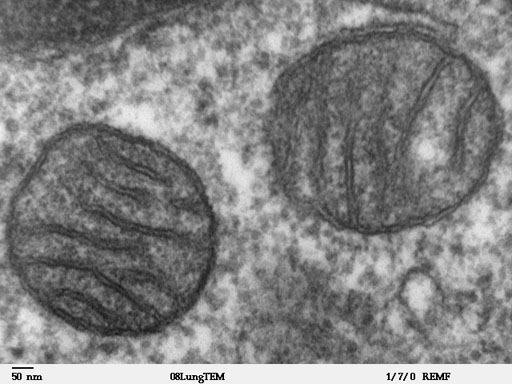Crucial Mitophagy Protein Identified
By LabMedica International staff writers
Posted on 05 Jan 2017
A receptor protein located on the inner mitochondrial membrane has been identified as a critical initiator of the process of mitochondrial destruction known as mitophagy.Posted on 05 Jan 2017
The removal of unwanted or damaged mitochondria by the autophagic process known as mitophagy is essential for key events in development, cellular homeostasis, tumor suppression, and prevention of neurodegeneration and aging. However, the precise mechanisms of mitophagy have not been elucidated.

Image: Two mitochondria from mammalian lung tissue displaying their matrix and membranes as shown by electron microscopy (Photo courtesy of Wikimedia Commons).
Investigators at the University of Texas Southwestern Medical Center (Dallas, USA) unraveled some of the secrets of mitophagy and described their findings in the December 22, 2016, online edition of the journal Cell.
They reported that they had identified the inner mitochondrial membrane protein, prohibitin 2 (PHB2), as a crucial mitophagy receptor involved in targeting mitochondria for autophagic degradation. PHB2 is located on the inner membrane of mitochondria, but is exposed when a mitochondrion's outer membrane ruptures. Should this occur, the LC3 (Microtubule-associated proteins 1A/1B light chain 3A) protein, which is present on the exterior of autophagosomes binds to PHB2. The autophagosome then transports the damaged mitochondrion to be destroyed by a lysosome.
The investigators also found that PHB2 was required for mitophagy induced by Parkin protein in mammalian cells and for the clearance of paternal mitochondria after embryonic fertilization in the flatworm C. elegans.
"The removal of damaged mitochondria by autophagy (a process called mitophagy) is important for cellular health," said senior author Dr. Beth Levine, professor of internal medicine and microbiology at the University of Texas Southwestern Medical Center. "By understanding how cells get rid of damaged mitochondria that contribute to cancer, neurodegenerative diseases, and aging, we may be able to develop treatments to prevent those processes."
Related Links:
University of Texas Southwestern Medical Center







 Array (4-plex).jpg)




